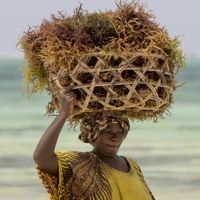

AquaInvest Platform
Authors
Tags
- Seaweed farming (17)
- Gender (3)
- Research (1)
- Biodiversity (1)
- Guidelines (1)
- Seaweed (24)
- Fishery (8)
- Environment, Disaster Risk, and Climate Change (1)
- China (1)
- Region - East Asia and Pacific (2)
- Agriculture (16)
- Korea (4)
- Ecosystem Services (3)
- Policy and Regulations (1)
- Climate Change Adaptation (4)
- Climate Resilience (5)
- Food Safety (3)
- Africa (2)
- Mariculture (21)
- Food Security (11)
- Policy - Food Security (4)
- Gender Equality (2)
- Blue Economy (30)
- Agribusiness (12)
- Climate Change (5)
- AFR Region (1)
- Environment (15)
- Policies and Legislation (2)
- Aquaculture (42)
- Indonesia (1)
- Nutrition & Diets (1)
- women (1)
Blog » Mapping Cabo Verde aquaculture suitability zones
Mapping Cabo Verde aquaculture suitability zones
Locating optimal ocean areas to grow sustainable protein
Cabo Verde government is devoted to creating space for sustainable food production in its oceanic water in the Atlantic, driving resilient blue growth, and accelerating the future of aquatic protein in the country.
Cabo Verde government is devoted to creating space for sustainable food production in its oceanic water in the Atlantic, driving resilient blue growth, and accelerating the future of aquatic protein in the country.
Please visit: https://storymaps.arcgis.com/stories/4bc68b00ff3d4a6080f3d7ecbbce4a41
Sprawling over 10 islands and numerous islets and possessing maritime exclusive economic zone around well over 700 thousand square kilometres which is almost two hundred times its land area, Cabo Verde relies strongly on ocean economy. While fisheries contributed 0.8-1.5 percent of the country's GDP over the last decade by official statistics or about 4% by FAO estimates , fish and processed fish products (including canned fish) constitute over 70% of the country overall export . The main commercial fish species in Cabo Verde include various species of tuna, mackerel, and groupers. Cabo Verde has yet to tap into aquaculture market, with current still small production , and the country is well positioned both in terms of geography and population skilled in fish and seafood catch and processing to develop the industry.
To put the Cabo Verde aquaculture potential in context, it should be noted that globally aquaculture produces over 57% of total fisheries and aquaculture industry output and grows steadily: in 2020, annual production of aquaculture (87.5 million tons) was twice the average annual volume in the 2000s and the output of marine aquaculture (33 million tons) was 85% higher than the average annual production in the 2000s. Aquaculture growth over the years has demonstrated capacity to bridge the fish demand and supply gap, alleviating pressure on marine resources and stabilizing the fish and seafood supply.
To put Cabo Verde’s aquaculture potential to work and set the country on the path towards sustainable fish and seafood production, the AquaInvest Platform , funded by PROBLUE , and the World Bank team in Cabo Verde, in consultation with the government identified and mapped offshore and onshore areas suitable for aquaculture on and around the 10 major islands in the country.